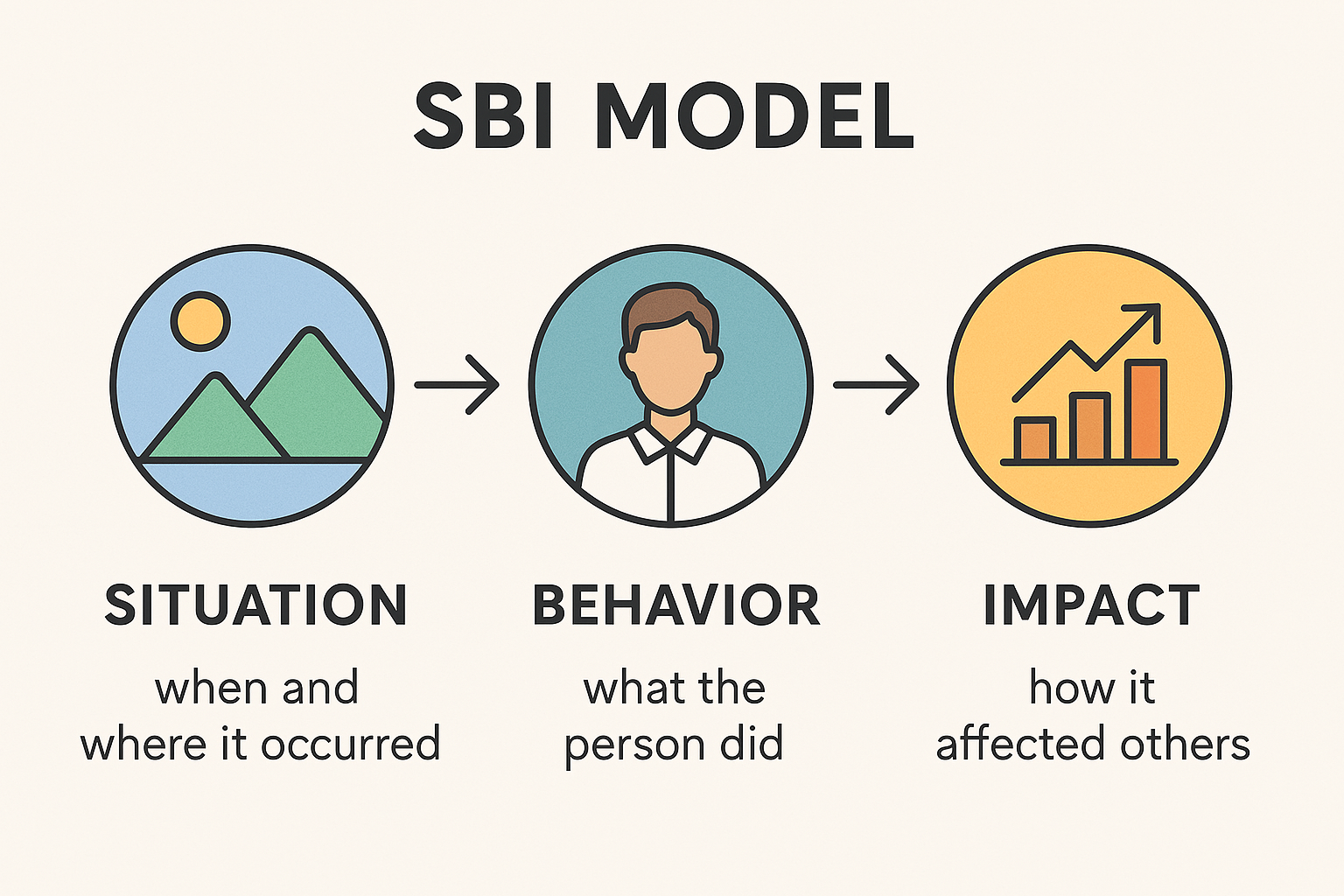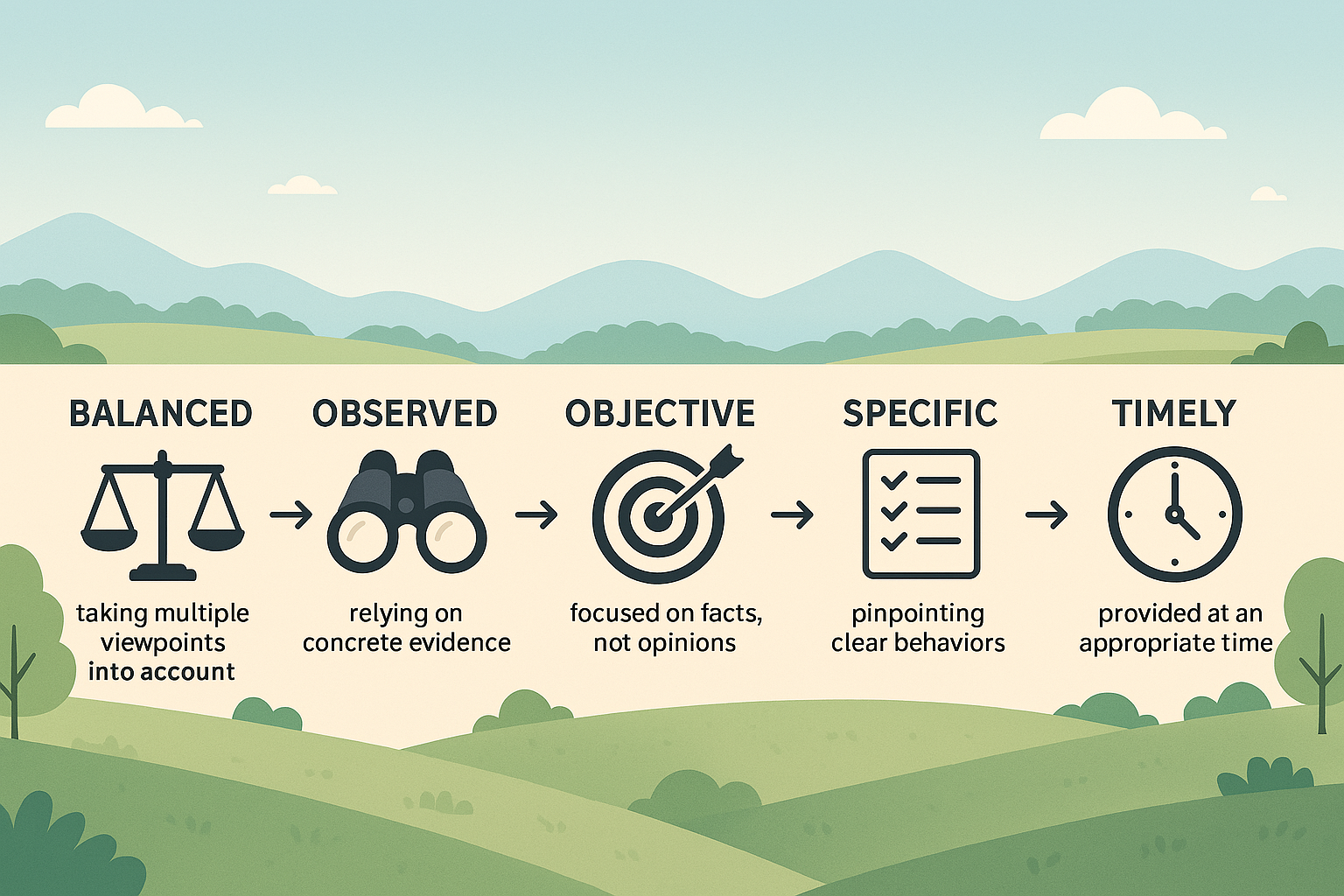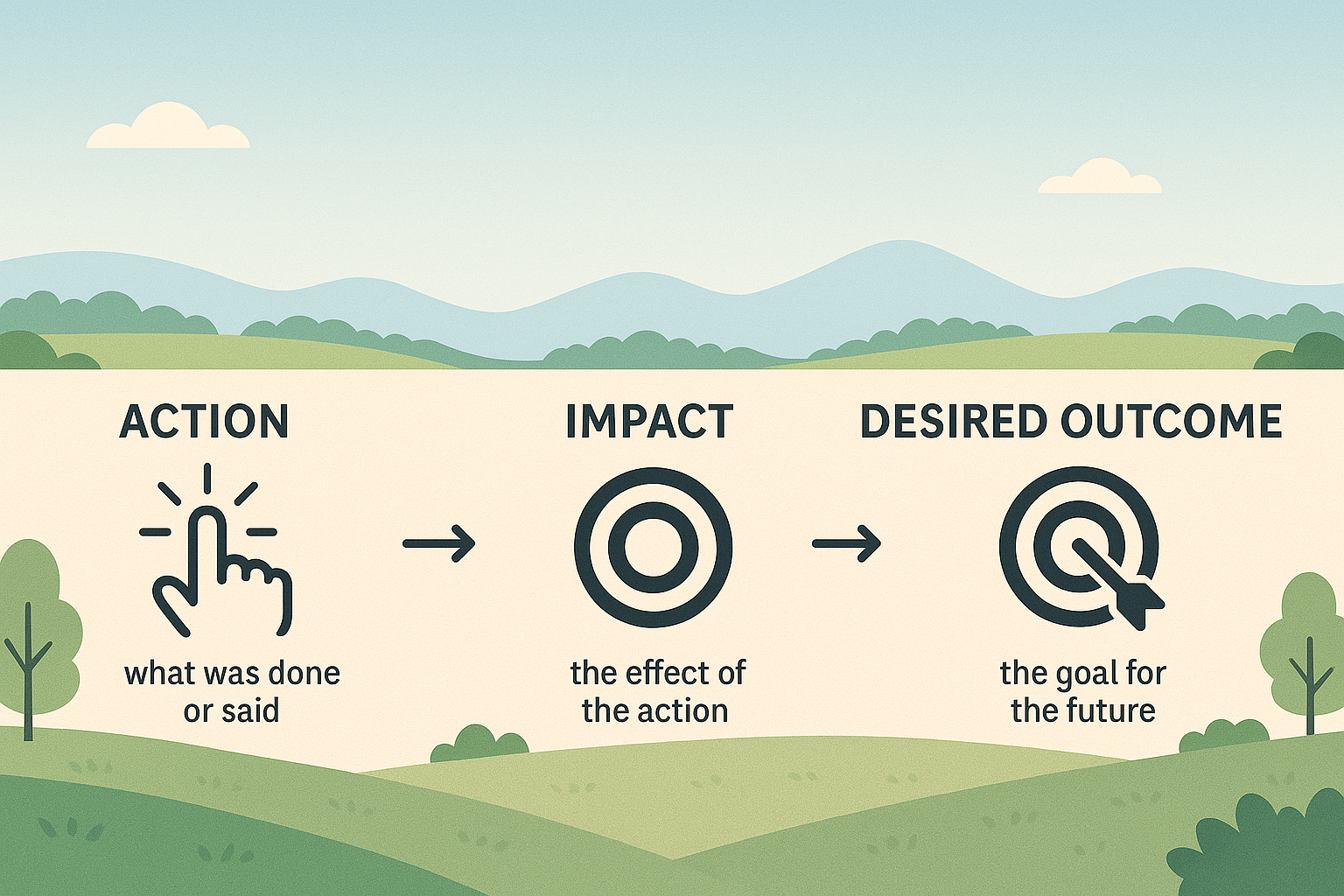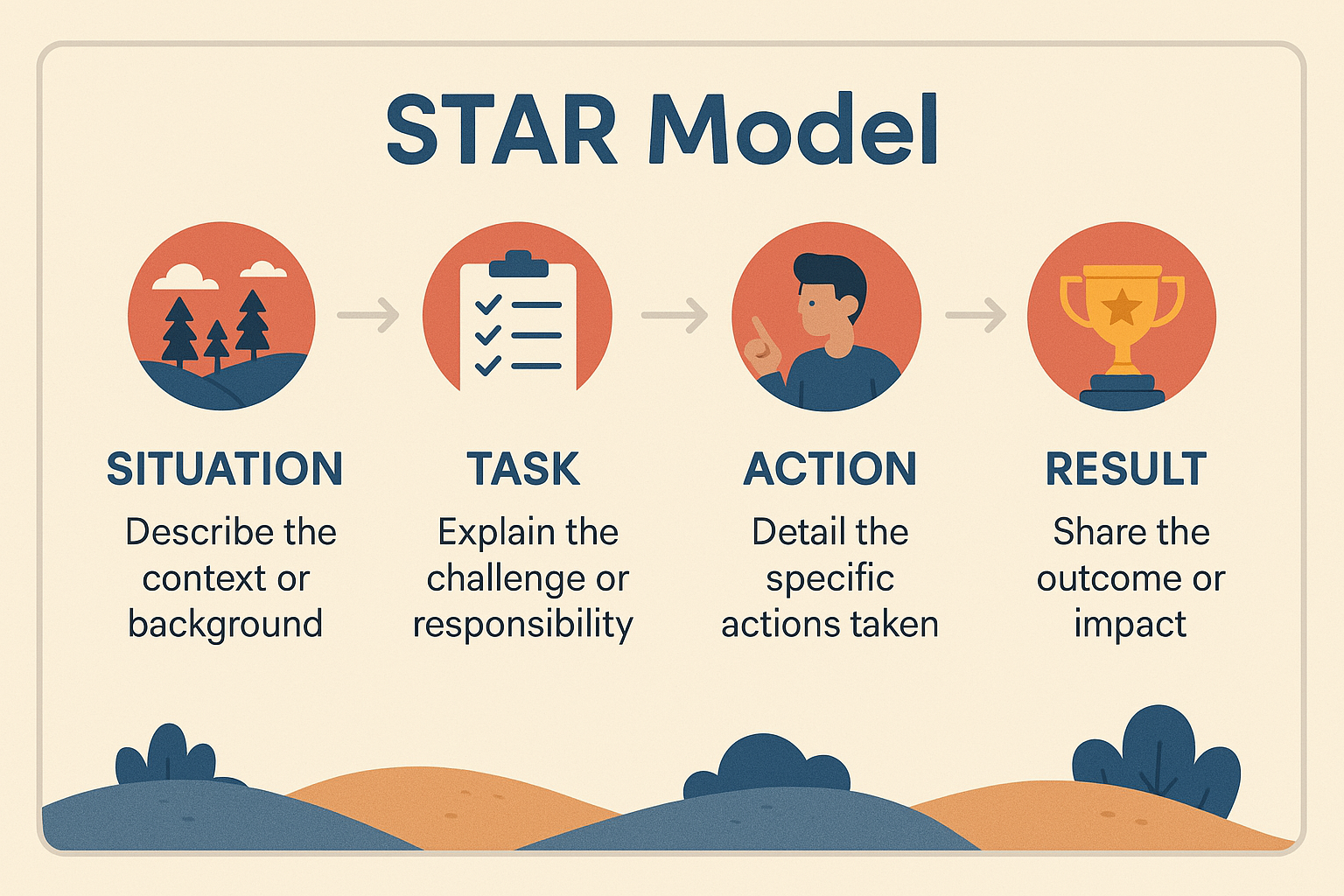5 Feedback Models to Transform Your Team Communication
This guide introduces five essential feedback frameworks—SBI, COIN, BOOST, AID, and STAR—providing clear explanations, diagrams, and real-world examples. Ideal for professionals looking to refine their feedback skills, each model's strengths, ideal use cases, and implementation tips are discussed. Transform team interactions and performance with structured, actionable feedback.

Introduction
Feedback is the lifeblood of any thriving team. It's how we grow, innovate, and collaborate effectively. But let's face it: feedback can be tricky. Unstructured or poorly delivered feedback can lead to confusion, resentment, and missed opportunities. That's why professionals rely on structured feedback models to keep communications clear, actionable, and effective.
In this guide, we'll explore five practical feedback models—SBI, COIN, BOOST, AID, and STAR. You'll learn how to apply each with clarity and confidence, along with visual diagrams and practical examples.
Let's dive in!
1. SBI (Situation-Behavior-Impact)
Overview: The SBI model is simple, powerful, and effective. It anchors feedback to specific situations, making the message clear and objective.
Components:
- Situation: Clearly describe the specific situation.
- Behavior: Focus on observable behaviors (not intentions).
- Impact: Highlight the impact this behavior had on you, the team, or the organization.
Example:
"In yesterday's team meeting (Situation), I noticed you interrupted Sara multiple times (Behavior). This made her withdraw from sharing her valuable insights (Impact)."
Best Use Cases: Immediate, specific feedback—especially useful in peer-to-peer scenarios.

2. COIN (Context-Observation-Impact-Next Steps)
Overview: COIN adds a future-oriented element to feedback, emphasizing actionable steps after discussing context and observations.
Components:
- Context: Explain the context clearly.
- Observation: State what you've observed objectively.
- Impact: Articulate the result or impact.
- Next Steps: Suggest clear actions or improvements.
Example:
"During the client presentation (Context), I noticed some key metrics were missing (Observation), which led to client confusion (Impact). Next time, let's double-check the data together beforehand (Next Steps)."
Best Use Cases: Performance reviews, structured 1:1 feedback sessions.

3. BOOST (Balanced-Observed-Objective-Specific-Timely)
Overview: BOOST helps deliver balanced feedback that’s fair, specific, and timely, making it easier to accept and act upon.
Components:
- Balanced: Provide both positive and constructive points.
- Observed: Stick to observed facts.
- Objective: Remain unbiased and factual.
- Specific: Be precise about details.
- Timely: Give feedback promptly.
Example:
"You did a great job handling customer queries (Balanced, Observed), but I noticed response times slipped in the afternoon (Specific, Objective). Let's review workload distribution this week (Timely)."
Best Use Cases: Regular team check-ins, balanced and ongoing performance feedback.

4. AID (Action-Impact-Desired Outcome)
Overview: AID provides concise feedback focusing quickly on actions, consequences, and desired outcomes—ideal for fast-paced environments.
Components:
- Action: Clearly outline the action.
- Impact: Explain the impact.
- Desired Outcome: Clarify what behavior or result is desired.
Example:
"Your detailed project update (Action) significantly clarified our goals (Impact). Continue this approach to keep the team aligned (Desired Outcome)."
Best Use Cases: Quick, actionable feedback, ideal for agile environments.

5. STAR (Situation-Task-Action-Result)
Overview: STAR is widely used for structured feedback and performance evaluations, giving a comprehensive view of actions and outcomes.
Components:
- Situation: Set the stage by describing the situation.
- Task: Outline the task or role.
- Action: Describe specific actions taken.
- Result: Discuss the outcomes or results.
Example:
"When we faced tight deadlines last month (Situation), you coordinated cross-team meetings (Task) by initiating daily standups (Action), which helped us deliver on time (Result)."
Best Use Cases: Structured performance reviews, interviews, in-depth feedback sessions.

Comparison Table of Feedback Models
| Model | Key Components | Ideal Use Case | Pros | Cons | Direction |
|---|---|---|---|---|---|
| SBI | Situation, Behavior, Impact | Immediate feedback | Simple, Clear | Less future-oriented | Peer-to-peer |
| COIN | Context, Observation, Impact, Next Steps | Reviews, structured conversations | Action-oriented | Can feel formal | Top-down, Peer |
| BOOST | Balanced, Observed, Objective, Specific, Timely | Regular check-ins | Comprehensive, balanced | Complex for quick feedback | Peer, Bottom-up |
| AID | Action, Impact, Desired Outcome | Quick, agile environments | Concise, actionable | Limited detail | Bottom-up, Peer |
| STAR | Situation, Task, Action, Result | Performance evaluations, interviews | Comprehensive, detailed | Time-consuming | Top-down |
Final Thoughts
Choosing the right feedback model depends on your context and goals. Whether immediate peer feedback or detailed performance reviews, each model offers unique strengths. Remember, effective feedback is specific, timely, and action-oriented. Use these models to create clarity, enhance communication, and support continuous improvement.
Ready to level up your feedback game? Try using one of these frameworks in your next meeting, and watch your team communication transform.
Enjoyed this article? Share it with your colleagues or your network—and let’s build better communication, together!